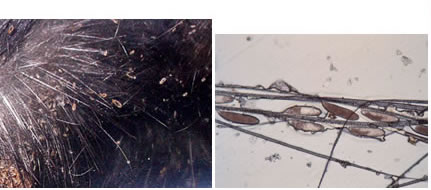Etiology: Polyplax serrata is the mouse louse.
Incidence: Incidence of infection is rare.
Transmission: Transmission occurs by direct contact and mutual grooming.
Distribution: First stage nymphs have a whole-body distribution. Later stages are found primarily on the forebody. Lice are generally host-specific.
Clinical signs: Clinical signs include an unkempt appearance, pruritis, and anemia in heavy infestations. This louse has been implicated as a vector of the blood parasite Eperythrozoon coccoides.
Diagnosis: Diagnosis methods are the same as for mites. Lice are larger than mites. These lice are Anoplurans (blood-suckers), so they may be blood-engorged.
